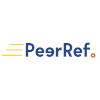Mapping the global landscape of chikungunya rapid diagnostic tests: A scoping review
This article has been Reviewed by the following groups
Discuss this preprint
Start a discussion What are Sciety discussions?Listed in
- Evaluated articles (PeerRef)
Abstract
Chikungunya (CHIKV) is a reemerging arboviral disease and represents a global health threat because of the unprecedented magnitude of its spread. Diagnostics strategies rely heavily on reverse transcriptase-polymerase chain reaction (RT-PCR) and antibody detection by enzyme-linked Immunosorbent assay (ELISA). Rapid diagnostic tests (RDTs) are available and promise to decentralize testing and increase availability at lower healthcare system levels.
Objectives
We aim to identify the extent of research on CHIKV RDTs, map the global availability of CHIKV RDTs, and evaluate the accuracy of CHIKV RDTs for the diagnosis of CHIKV.
Eligibility criteria
We included studies reporting symptomatic individuals suspected of CHIKV, tested with CHIKV RDTs, against the comparator being a validated laboratory-based RT-PCR or ELISA assay. The primary outcome was the accuracy of the CHIKV RDT when compared with reference assays.
Sources of evidence
Medline, EMBASE, and Scopus were searched from inception to 13 October 2021. National regulatory agencies (European Medicines Agency, US Food and Drug Administration, and the Brazilian National Health Surveillance Agency) were also searched for registered CHIKV RDTs.
Results
Seventeen studies were included and corresponded to 3,222 samples tested with RDTs between 2005 and 2018. The most development stage of CHIKV RDTs studies was Phase I (7/17 studies) and II (7/17 studies). No studies were in Phase IV. The countries that manufacturer the most CHIKV RDTs were Brazil ( n = 17), followed by the United States of America ( n = 7), and India ( n = 6). Neither at EMA nor FDA-registered products were found. Conversely, the ANVISA has approved 23 CHIKV RDTs. Antibody RDTs ( n = 43) predominated and demonstrated sensitivity between 20% and 100%. The sensitivity of the antigen RDTs ranged from 33.3% to 100%.
Conclusions
The landscape of CHIKV RDTs is fragmented and needs coordinated efforts to ensure that patients in CHIKV-endemic areas have access to appropriate RDTs. Further research is crucial to determine the impact of such tests on integrated fever case management and prescription practices for acute febrile patients.
Article activity feed
-
-

Peer review report
Reviewer: Argentina Felisbela Muianga,
Institution: Instituto Nacional de Saúde-Maputo-Mozambique email: valiosa.muianga@gmail.com, Argentina.muianga@ins.gov.mz
General comments
The manuscript addresses a relevant subject that is still, in a way, little prioritized, therefore little developed and therefore raises the need for further in-depth studies to develop a good RDT that can detect infection in the most important phase of infection and ensure a better real-time response.
Section 1 – Serious concerns
- Do you have any serious concerns about the manuscript such as fraud, plagiarism, unethical or unsafe practices? No
- Have authors’ provided the necessary ethics approval (from authors’ institution or an ethics committee)? No, I did not see any approach on ethical aspects of the study. This should updated.
Section 2 – …
Peer review report
Reviewer: Argentina Felisbela Muianga,
Institution: Instituto Nacional de Saúde-Maputo-Mozambique email: valiosa.muianga@gmail.com, Argentina.muianga@ins.gov.mz
General comments
The manuscript addresses a relevant subject that is still, in a way, little prioritized, therefore little developed and therefore raises the need for further in-depth studies to develop a good RDT that can detect infection in the most important phase of infection and ensure a better real-time response.
Section 1 – Serious concerns
- Do you have any serious concerns about the manuscript such as fraud, plagiarism, unethical or unsafe practices? No
- Have authors’ provided the necessary ethics approval (from authors’ institution or an ethics committee)? No, I did not see any approach on ethical aspects of the study. This should updated.
Section 2 – Language quality
- How would you rate the English language quality? High quality
Section 3 – validity and reproducibility
Is the rationale for, and objectives of, the scoping review clearly stated? Yes
Are the methods documented and analysis provided so that replication can be conducted? Yes
Is the statistical analysis and its interpretation appropriate? Yes
Are quality of the figures and tables satisfactory? Yes
Are the conclusions adequately supported by the results presented in the review? Yes
Are there any fundamental flaws or errors that make the scoping review invalid? No
Section 4 – Suggestions
- Based on your answers in section 3 how could the author improve the study?
I did not see information regarding to the type of sample used on the different platforms, since for the RDT the type of samples influences accessibility.
How was the prototype evaluated, in terms of type of samples and environmental conditions?
- Do you have any other feedback or comments for the Author?
No
Section 5 – Decision
Verified manuscript: The content is scientifically sound, only minor amendments (if any) are suggested.
-

Peer review report
Reviewer: Sadia Ali Pereira,
Institution: Instituto Nacional de Saúde, Mozambique email: Sadia.abdul.ali@gmail.com / sadia.pereira@ins.gov.mz
Section 1 – Serious concerns
- Do you have any serious concerns about the manuscript such as fraud, plagiarism, unethical or unsafe practices? No
- Have authors’ provided the necessary ethics approval (from authors’ institution or an ethics committee)? not applicable
Section 2 – Language quality
- How would you rate the English language quality? High quality
Section 3 – validity and reproducibility
Is the rationale for, and objectives of, the scoping review clearly stated? Yes
Are the methods documented and analysis provided so that replication can be conducted? No
Is the statistical analysis and its interpretation appropriate? Yes
Are quality of the figures and tables satisfactory? No
Peer review report
Reviewer: Sadia Ali Pereira,
Institution: Instituto Nacional de Saúde, Mozambique email: Sadia.abdul.ali@gmail.com / sadia.pereira@ins.gov.mz
Section 1 – Serious concerns
- Do you have any serious concerns about the manuscript such as fraud, plagiarism, unethical or unsafe practices? No
- Have authors’ provided the necessary ethics approval (from authors’ institution or an ethics committee)? not applicable
Section 2 – Language quality
- How would you rate the English language quality? High quality
Section 3 – validity and reproducibility
Is the rationale for, and objectives of, the scoping review clearly stated? Yes
Are the methods documented and analysis provided so that replication can be conducted? No
Is the statistical analysis and its interpretation appropriate? Yes
Are quality of the figures and tables satisfactory? No
It is difficult to read figure 4, on page 29 there is no legend of the figure, in figure 1 the pallet colours could have greater variation.
Are the conclusions adequately supported by the results presented in the review? No
Are there any fundamental flaws or errors that make the scoping review invalid? Not any major errors detected
Section 4 – Suggestions
- Based on your answers in section 3 how could the author improve the study?
I would suggest improving the methodology and the criteria for articles selection/inclusion
- Do you have any other feedback or comments for the Author?
Will be helpful if the authors could better discussion the risk bias and applicability. Why select studies with patients with signs for CHIKV? What about asymptomatic? Not proper discussed the possibility of cross reactivity between other alphaviruses.
Section 5 – Decision
Verified with reservations: The content is scientifically sound but has shortcomings that could be improved by further studies and/or minor revisions.
-

SciScore rigor report
Sciscore is an AI platform that assesses the rigor of the methods used in the manuscript. SciScore assists expert referees by finding and presenting information scattered throughout a manuscript in a simple format.
Not required = Field is not applicable to this study
Not detected = Field is applicable to this study, but not included.
Ethics
Field Sample Permit: Our findings indicate a paucity of 217 research focusing on field trials and implementation studies related to CHIKV RDTs .
IRB: I confirm all relevant ethical guidelines have been followed, and any necessary IRB and/or ethics committee approvals have been obtained.
Consent: I confirm that all necessary patient/participant consent has been obtained and the appropriate institutional forms have been archived, and that any patient/participant/sample …
SciScore rigor report
Sciscore is an AI platform that assesses the rigor of the methods used in the manuscript. SciScore assists expert referees by finding and presenting information scattered throughout a manuscript in a simple format.
Not required = Field is not applicable to this study
Not detected = Field is applicable to this study, but not included.
Ethics
Field Sample Permit: Our findings indicate a paucity of 217 research focusing on field trials and implementation studies related to CHIKV RDTs .
IRB: I confirm all relevant ethical guidelines have been followed, and any necessary IRB and/or ethics committee approvals have been obtained.
Consent: I confirm that all necessary patient/participant consent has been obtained and the appropriate institutional forms have been archived, and that any patient/participant/sample identifiers included were not known to anyone (e.g., hospital staff, patients or participants themselves) outside the research group so cannot be used to identify individuals.
Inclusion and Exclusion Criteria
98 Articles were excluded if (i) the studies were reviews, case reports, or opinion articles; (ii) 99 the studies evaluated the performance of reverse transcription loop-mediated isothermal 100 amplification (RT-LAMP) assays; (iii) the studies were related to an outbreak investigation 101 without the evaluation of the accuracy of CHIKV RDTs; (iv) the studies used an inappropriate 102 study population (asymptomatic individuals); (v) the studies described inappropriate It is made available under a CC-BY-NC-ND 4.0 International license.
Attrition
Based on the tile and the abstract , 96 were excluded , with 89 full-text 158 articles retrieved and assessed for eligibility .
Sex as a biological variable
not detected.
Subject Demographics
Age: not detected. Weight: not detected.
Randomization
Similarly , there was a high risk of bias in 210 the patient selection domain because only three studies enrolled a consecutive or random 211 sample of eligible patients with suspicion of CHIKV infection to reduce the bias in the 212 diagnostic accuracy of the index test .
Blinding
not detected.
Power Analysis
not detected.
Replication
not required.
Data Information
Availability: The 90 Prisma-ScR checklist is available in the Supplementary material.
Identifiers: medRxiv preprint doi: https:// doi.org/10.1101/2022.01.28.22270018; this version posted January 30 , 2022 . https://doi.org/10.1101/2022.01.28.22270018
-

